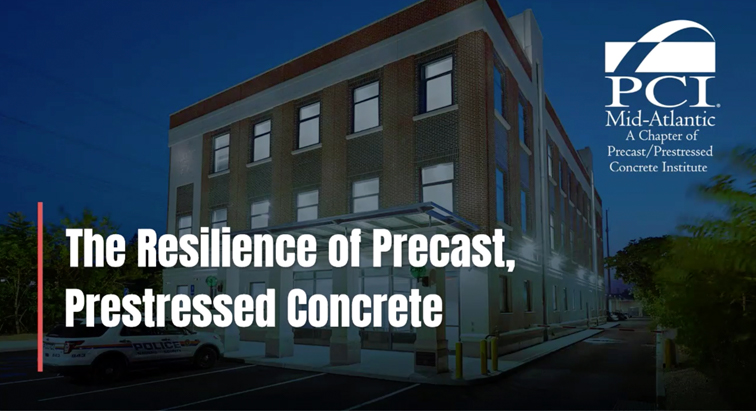There is a constant and growing demand for new, multi-family residences, and precast concrete brings many benefits to construction and the quality of life for building occupants, which is key to the success of these projects in particular. When determining where to live, families have stringent requirements for functionality and safety. With precast, building owners and landlords check off every one of their occupants’ boxes and then some.
While meeting certain aesthetic and design goals, insulated precast concrete panels also provide a safe, long-lasting structure with thermal efficiency, protection from storms, face-sealed systems, and more. Above all, precast fosters a comfortable and safe environment for its dwellers.
We’ll explore the benefits of precast concrete for residential construction, so you can determine if it’s right for your next project. To learn more about precast concrete in apartments, lofts, duplexes, student housing, dormitories, and more, watch the video below.
Accelerated, Offsite & Prefabricated Construction
By nature, precast concrete accelerates construction timelines, which is imperative for projects set in urban, fast-paced environments. Compared to traditional materials like cast-in-place concrete or hand-laid brick, precast significantly reduces erection time and job site disturbance, minimizing impact on surrounding communities and businesses.
The Locks Tower Apartments in Richmond, VA, demonstrate how precast’s offsite prefabrication allowed the construction team to maintain aggressive timelines despite working within a densely populated area. Similarly, The Beach three-tower complex of precast concrete residential homes located in Atlantic City benefitted from the offsite manufacturing of precast components, which ensured construction could progress smoothly even during harsh coastal weather.
Prefabricating building components away from the construction site in temperature-controlled manufacturing facilities allows high-performance precast concrete components to be produced consistently, regardless of external conditions. This approach, utilized in the South Beach at Long Branch development, allowed the team to meet project deadlines while ensuring high-quality, durable panels.
Factory-controlled casting also guarantees that every pour of concrete is uniform, providing greater quality assurance and reducing the likelihood of defects. The Icon in Richmond made the most of these benefits, resulting in a reliable, aesthetically appealing structure within a compact urban footprint that perfectly illustrates the efficiency of precast concrete for residential construction.
What Are the Inherent Durable Qualities of Concrete?
Concrete is renowned for its inherent durability, a quality that makes it a cornerstone in modern construction. Its robust composition allows it to endure for decades with minimal maintenance, resisting wear from traffic, weather, and chemical exposure.
Concrete is impervious to fire, water, and pests, and it does not rot, rust, or burn, ensuring that structures made from it are safe, stable, and long-lasting. Over time, concrete can even gain strength, particularly when its components continue to cure in the presence of moisture.
This capacity for enduring harsh conditions and heavy loads without significant wear makes concrete an ideal choice for everything from residential buildings to critical infrastructure.
What Is Prestressed Concrete vs Post Tensioned Concrete?
Different techniques in the construction industry can serve distinct purposes and offer unique advantages, which is why it’s important to be familiar with the difference between prestressed concrete vs post tensioned concrete.
Prestressed concrete and post-tensioned concrete are two forms of concrete reinforcing techniques designed to enhance the strength and durability of concrete structures, particularly by overcoming concrete's inherent weakness in tension. Both methods involve the application of compressive stress to the concrete, but they differ in how and when this stress is applied.
Prestressed concrete, and in particular especially pre-tensioned concrete, typically involves tensioning the steel before the concrete is cast and often has the steel bonded to the concrete, providing immediate structural integrity and load-bearing capacity.
Post-tensioned concrete allows for tensioning after the concrete has cured, which can be adjusted and inspected throughout the life of the structure. This method is particularly useful in structures requiring large spans and slender profiles, such as bridges, parking garages, and slab constructions.
What is the Aesthetic Versatility of Precast Concrete?
Precast reduces the need for other materials, and its end product is a durable, finished or paint-ready wall that can stay as is. But precast concrete panels architecture—specifically precast façades—can be customized with colors and pigments, thin brick, textured finishes, sandblasting, and other design preferences. Not only does this give architects the freedom to meet specific design goals, but it also provides families with desirable spaces to call home.
In the Richmond Icon project, precast concrete was used to replicate the look of historical brickwork, creating a modern building that blended seamlessly with its traditional surroundings. The South Beach precast concrete residential homes showcase how precast’s versatility in design options helped meet both aesthetic and structural demands. By using thin brick and other façade treatments, the building maintained a visually appealing exterior while benefiting from the durability and low-maintenance requirements of precast.
Is Architectural Precast Concrete Structurally Durable?
Beyond appearance, precast concrete provides the structural versatility needed to meet important functionality goals. Prefabrication of concrete in factory-controlled environments supports the replication of panels when creating large modular spaces.
Precast hollowcore floors also offer exceptional sound attenuation, with the possibility of designing clear spans and finished ceilings, reducing floor-to-floor heights and allowing for more open interior spaces. Precast hollowcore plank is often used for floors and roofs on bearing-wall structures, providing spans up to 40 feet long, vibration resistance, and two-hour fire ratings.
Precast’s inherent structural versatility allows teams to create luxury apartments, lofts, affordable housing, duplexes, student housing, dormitories, and other types of multi-family residences.
How Does Precast Concrete Provide Hazard Protection?
Precast is a robust building material that offers multi-hazard protection against severe storms, hurricanes, tornados, earthquakes, and blasts, while meeting FEMA 361 guidance for safe rooms. It is a noncombustible material and upholds passive fire protection before occupants and systems are even aware of the danger. This gives occupants valuable time to evacuate in the event of a fire.
For precast concrete buildings like The Beach and Locks Tower Apartments, located in coastal or high-risk storm areas, the resilience of precast concrete is especially beneficial. These buildings face constant exposure to harsh weather conditions, but precast’s multi-hazard resistance ensures the long-term safety and security of their residents.
On top of weather-related resilience, precast concrete structures are designed to last up to 100 years with minimal maintenance and upkeep, making them a reliable, long-term investment. Precast components offer corrosion resistance and can withstand even the most aggressive environmental conditions.
How Does Precast Concrete Improved Health & Safety?
In addition to structural integrity, precast concrete contributes to healthier indoor environments. By providing continuous insulation and acting as an air and vapor barrier within the same wall panel system, precast eliminates mold concerns and improves air quality. This insulation system can also reduce operational costs and enhance thermal performance, keeping residents comfortable year-round. Precast durability is highly valued by design teams, offering a long-lasting, reliable alternative to traditional materials while enhancing the quality of life for building occupants.
Ultimately, precast reduces onsite labor and lowers jobsite safety risks, which in turn minimizes the potential for delays and lowering overall project costs. The long service life and low-maintenance requirements of precast components further enhance the value for building owners and tenants alike.
Learn More About Precast, Prestressed Concrete
Review the benefits of precast concrete building projects in the video above and share it with your industry peers and clients to spread awareness of this innovative material.
Interested in learning more about precast and how the precasters of the PCI Mid-Atlantic Chapter support projects of all kinds? Explore the PCI Mid-Atlantic Solutions Center for helpful resources and get in touch with PCI-MA for precast information, higher education partnerships, and more.
Sources
Precast at Home in Multifamily Projects, High Profile, March 2013
The Unsurpassed Benefits of Using Precast Concrete for Multi-Family Housing, Precast Focus, PCI-MA





